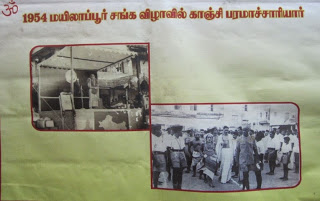VSK TN
As the world is gearing up to celebrate World Environment Day (WED) on June 5, it has become imperative to re-visit the background of this event and its relevance to us in Bharat.
WED was established by the United Nations General Assembly in the year 1972 on the first day of the Stockholm Conference on the Human Environment, resulting from discussions on the integration of human interactions and the environment. Subsequently, in the year 1974, the first WED was celebrated with the theme “Only One Earth”. From the year 1987, the idea of rotating the center of these activities through selecting different host countries began. Accordingly, Bharat was the host country in 2011 and once again in 2018. The theme for this year is “Celebrate Biodiversity” and will be hosted in Colombia in partnership with Germany.
As usual, the common public in our country would also be gung-ho in “celebrating” WED by taking pledges and sharing nice posters as to how we all should contribute in saving environment and how we all should learn to co-exist with nature. For their part, Corporates would do tree plantation in their premises as well as in their neighbourhood and urge their employees and other stakeholders to protect environment.
While it appears to be good, both in intent and impact, one may ponder whether is this all we can do to “protect” and “conserve” environment particularly from a Bharatheeya view of life and thinking ? Are we capable of thinking only about a ceremonial event once in a year and feel elated about our “contribution” to environment ? As we dig deeper into our inscriptions and ethos, there is much more responsibility for us as Bharatheeya to understand and conserve environment.
All the four Vedas – Rig, Sama, Yajur and Atharva recognize the importance of maintenance of the seasons’ cycles that are likely to get altered due to the climate change owing to inappropriate human actions. It is astonishing to note that our ancestors regarded nature and the environment in a holistic manner and revered each of its constituents and entities by carefully preserving them.
A Vedic verse reads thus :
“Do not harm the environment, do not harm the water and the flora, earth is my mother, I am her son, may the waters remain fresh, do not harm the waters. Tranquillity be to the atmosphere, to the waters, to the crops and vegetation”.
Hence, it can be clearly surmised that preserving nature always remained a part of our life and all of us are duty-bound to preserve and co-exist with nature.
It is this seed that imbibes conservation in our thought and one would be surprised to note that our ancestors have in fact have gone to the extent of “sacrificing” their precious lives in large numbers to protect nature.
In 1730 CE, Amrita Devi (Beniwal), mother of 3 daughters, came to know that Maharaja Abhay Singh, Ruler of Marwar (Jodhpur) sent his hundreds of men to cut the Khejri trees to burn lime for the construction of his new palace. On coming to know this, Amrita Devi protested against King’s men. She said she would rather give away her life to save the green tress. The words she spoke at that moment need to be inscribed in golden words :
“If a tree is saved even at the cost of one’s head, it is worth it.”
Saying these words, she offered her head. The axes, which were brought to cut the trees, severed her head from the trunk. Her 3 young daughters Asu, Ratni and Bhagu offered their heads too to save trees and were axed to death. The news spread like wildfire. The villagers gathered there in huge numbers and started offering themselves for every green tree to be cut. Old, Young, Men, Women, Children and a few newly wedded couple also made supreme sacrifice to save trees from being cut. In total, 363 people gave up their precious lives to save trees being cut. This happened on August 28. The Governments of Rajasthan and Madhya Pradesh have instituted the prestigious Amrita Devi Vishnoi Smriti Award for excellent contribution to the protection of environment.


